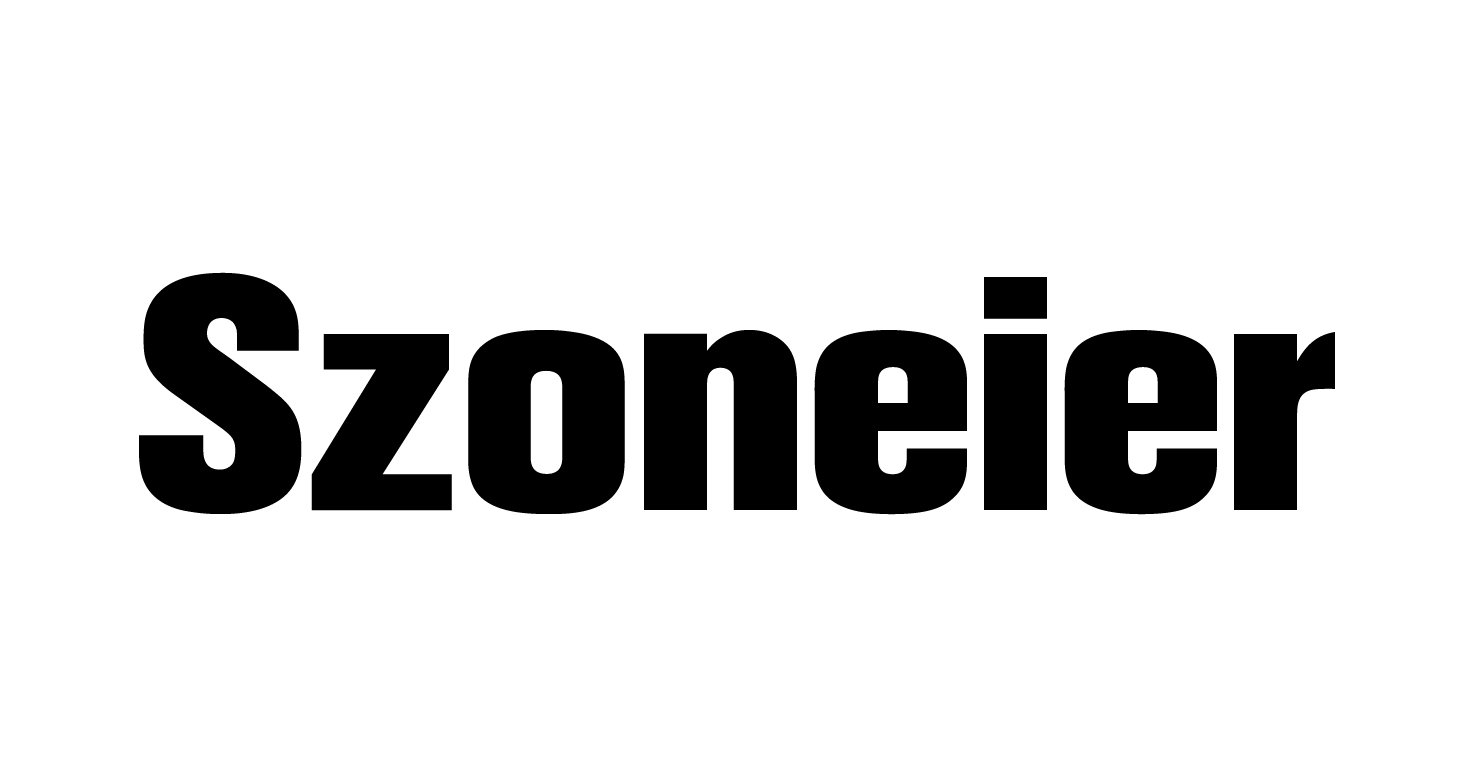Accidents happen—even in well-organized textile production lines. A drop of acrylic paint landing on fabric during printing, prototyping, or finishing can be more than a nuisance. Left untreated or removed improperly, it can damage fabric integrity, cause color distortion, or even halt production schedules. But here’s the good news: with the right strategies and tools, you can eliminate acrylic paint stains without ruining the fabric or losing valuable production hours.
Yes, you can remove acrylic paint from fabric without halting your workflow. Use solvent-safe solutions, spot-cleaning tools, and quick-response handling to minimize production delays and preserve fabric integrity.
Let’s explore how industry pros handle this situation, what the science says, and which approach works best—whether you run a 1000-unit fabric batch or just a small design studio. Spoiler: Not all removal methods are equal, and some can quietly destroy elasticity or color under the surface if you’re not careful.
What makes acrylic paint difficult to remove from fabric?
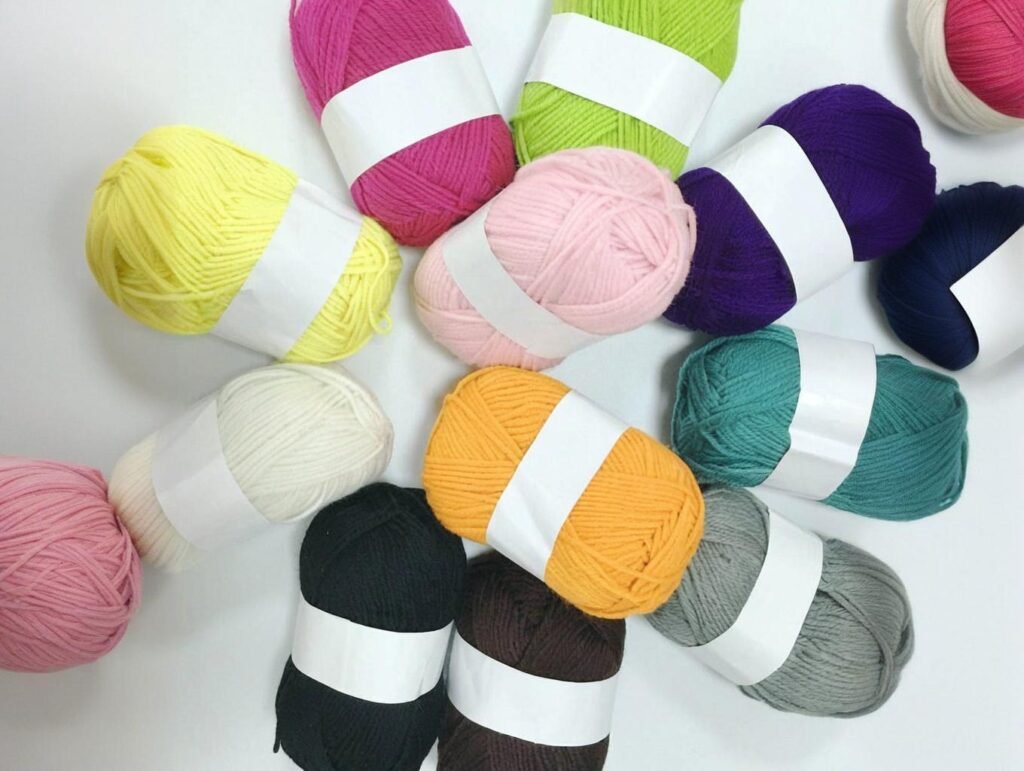
Acrylic paint is deceptively easy to work with—until it lands where it shouldn’t. At first glance, it seems water-soluble and simple to clean. But as soon as it dries, it undergoes a chemical transformation that locks it firmly onto fabric fibers. This makes it one of the most persistent contaminants during textile production, printing mishaps, or finishing errors.
Once dry, acrylic paint becomes a plastic-like film that chemically binds with textile fibers. This makes it extremely difficult to remove from most fabrics, especially synthetics like polyester and spandex, without damaging the material or altering its finish.
Whether you’re running a textile printing facility, finishing garments in a fashion line, or operating a furniture upholstery workshop, understanding why acrylic paint resists removal is key to responding fast and effectively.
Understanding Paint-Fiber Interaction
Acrylic Paint: A Fast-Drying Plastic in Disguise
Acrylic paint is made from an acrylic polymer emulsion—a synthetic resin suspended in water along with pigments and flow agents. Once the water evaporates, what’s left behind is a resilient polymer layer. That polymer doesn’t just sit on top of the fabric; it anchors into it.
| Component | Function | Removal Difficulty |
|---|---|---|
| Pigment | Provides visual color | Moderate |
| Acrylic Polymer | Binds to surface and seals color | High |
| Water (evaporates) | Temporary solvent for application | Low |
| Additives | Control flow, adhesion, drying | Moderate |
When paint dries on fabric—particularly tightly woven or coated fabrics—the polymer hardens and creates a bond that’s far stronger than most consumers or even factory techs expect.
Fabric Chemistry Matters: Why Some Fabrics Suffer More
| Fabric Type | Paint Adhesion | Removal Notes |
|---|---|---|
| Polyester | Very Strong | Low absorbency; surface binding is stubborn |
| Cotton | Moderate | Absorbs more, allowing quicker intervention |
| Nylon | High | Slightly porous but chemically reactive to acrylics |
| Spandex Blends | High | Sensitive to solvents; easy to damage with over-treatment |
In technical fabrics—especially synthetic performance textiles—removal is even more complex. They tend to resist water, absorb paint unevenly, and warp under solvent exposure or high heat.
Real-World Case Study: German Prototyping Lab Findings
A textile prototyping center in Frankfurt conducted comparative trials on acrylic removal across six fabric types. Results showed:
- If intervention was delayed beyond 10 minutes, 43% of polyester-blend samples retained visible stain remnants even after multi-step removal.
- Immediate blotting and dampening with isopropyl alcohol (IPA) or warm water reduced pigment spread by 62%, especially on absorbent cotton or canvas.
This underscores one key operational principle: speed is more important than solvents. The faster your team reacts, the higher the chances of full stain elimination.
Debunking Common Myths in Fabric Treatment
| Misconception | Reality |
|---|---|
| “Acrylic paint washes out with water.” | Only when wet. After drying, water alone is ineffective. |
| “All solvents work the same.” | Some will dissolve paint and fabric finish—especially elastane blends. |
| “Any brush or scraper is fine.” | Aggressive tools can fray fibers or flatten fabric texture irreversibly. |
Acrylic is stubborn not because it’s industrial-grade paint—but because it’s engineered to resist wear, fade, and flaking. Unfortunately, those are also the traits that make it cling to the wrong surfaces too well.
The Science of Adhesion and Failure Risk
1.1 Polymer Chain Locking on Woven Surfaces
Acrylic paint’s polymer strands tangle with fabric threads as water exits the matrix. In synthetics like polyester, these chains can loop into the weave structure at a microscopic level—especially if the fabric is textured or brushed.
1.2 Surface Porosity and Paint Anchor Rate
- Open-weave cotton or muslin: Allows partial absorbance, making surface paint easier to lift off.
- Closed-weave polyester or stretch jersey: Encourages surface pooling; once dry, removal often leaves ghosting or film residue.
1.3 Impact of Finish Coatings
Some industrial fabrics have finishes—such as waterproofing, antimicrobial sprays, or heat-set coatings. These can:
- Worsen adhesion if the coating is sticky (e.g., resin-finish polyesters)
- Improve removal if the coating is sheer or repellent (e.g., fluorocarbon-treated fabrics)
Actionable Advice: Build a Fast Response Kit in Production Environments
| Tool/Agent | Purpose |
|---|---|
| Clean microfiber cloth | First-step blotting |
| Warm distilled water | Prepares stain without spreading |
| Isopropyl alcohol | Initial solvent (70–90% preferred) |
| Soft bristle toothbrush | Gentle abrasion |
| Enzyme-based detergent | Final stage cleanup |
By organizing pre-packed stain kits in your QC area or fabric handling zone, you can cut average remediation time by up to 35%, according to a 2024 industry report from EuroTextiles.
Which tools and products work best for industrial-level stain removal?
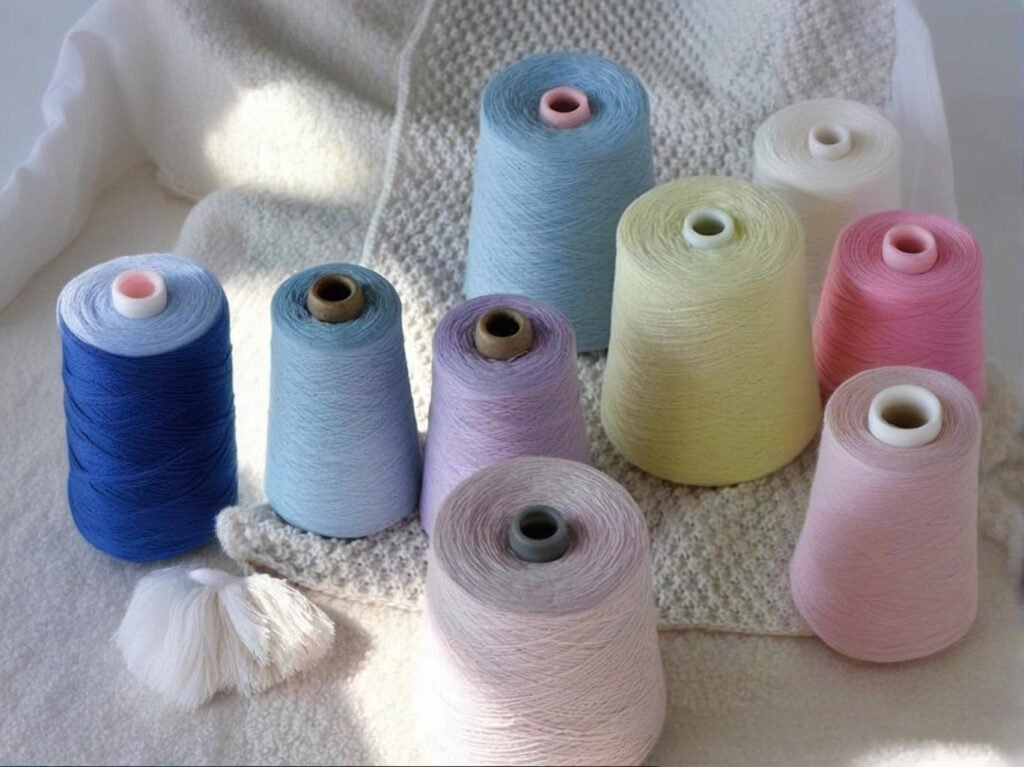
In textile manufacturing, cleaning a single stain can be more complex than producing the fabric itself. Why? Because removal must be fast, repeatable, and safe—not just for the fabric, but also for the factory’s output and compliance with regulatory standards. Mistakes in stain removal can ruin hundreds of meters of inventory, disrupt workflows, or lead to inconsistencies in product quality.
The best tools for industrial-level acrylic paint removal include compressed air spot guns, enzyme pre-treatments, and solvent-specific systems matched to the fabric type. Heat-based tools should be avoided as they can set stains deeper into the fiber matrix.
Let’s explore what actually works—and more importantly, what avoids damage or discoloration during industrial cleaning operations.
Recommended Spot-Cleaning Tools
There is no “one-size-fits-all” tool for removing acrylic paint. Instead, industrial setups often use a tiered solution set depending on the fabric type, degree of set-in, and response time.
| Tool Type | Best For | Cost Range (USD) | Effectiveness | Comments |
|---|---|---|---|---|
| Compressed Air Spot Gun | Light surface stains on synthetics | $100–$300 | ★★★★☆ | Fast, minimal solvent needed |
| Ultrasonic Cleaner | Small batches, delicates | $200–$800 | ★★★★★ | Works best on woven cotton or blends |
| Steam Pen (Handheld) | Thin fabrics, pre-cleaning aid | $30–$90 | ★★☆☆☆ | Use with caution; avoid heavy stains |
| Rotary Brush Station | Durable textiles like canvas | $400–$900 | ★★★☆☆ | Needs operator control to avoid abrasion |
| Vacuum-Driven Spotter | Upholstery, bulk pre-finishing | $1,000+ | ★★★★☆ | High-volume spot extraction |
Operator Tip: Always pre-test cleaning tools on fabric remnants before applying to final garments. Mechanical damage is a common issue when using uncalibrated rotary stations.
Solvent Compatibility Matrix
Choosing the wrong solvent doesn’t just fail—it can damage your product or machinery. Here’s a matrix that summarizes solvent performance for the most common industrial fabrics affected by acrylic paint.
| Solvent Type | Acrylic Paint Removal Power | Safe for Polyester | Safe for Spandex | Comments |
|---|---|---|---|---|
| Isopropyl Alcohol (70%) | Moderate | ✔️ | ⚠️ Can cause elasticity loss | Ideal for cotton, needs fast evaporation |
| Acetone | High | ⚠️ May discolor | ❌ | Avoid on synthetics; fast-acting |
| Citrus-Based Cleaner | Moderate | ✔️ | ✔️ | Gentler, eco-friendly, slower evaporation |
| Enzyme Pre-Treat | Low (on dried paint) | ✔️ | ✔️ | Great for fresh stains and prep soaking |
| N-Methyl-2-Pyrrolidone | Very High | ⚠️ Caution on coatings | ❌ | Used in pro labs; regulated in EU/US |
Did You Know? N-Methyl-2-Pyrrolidone (NMP), though highly effective at breaking down acrylic polymers, is banned in some countries due to toxicity concerns. Use only in closed-system extraction units with certified ventilation.
How These Methods Compare in Real Settings
2.1 What Tool Combinations Perform Best by Fabric Type?
| Fabric Type | Preferred Method Combo | Notes |
|---|---|---|
| Cotton | Isopropyl alcohol + microfiber + enzyme pre-soak | Absorbent; blotting crucial to avoid spread |
| Polyester | Citrus cleaner + spot gun + steam pen (low temp) | Avoid heat drying; alcohol may ghost pigments |
| Spandex/Elastane | Enzyme soak + ultrasonic + cold water rinse | Never use acetone or alcohol directly; risk of weakening elasticity |
| Coated Nylon | Spot gun + gentle rotary brush + pH-neutral rinse | Check coating type—PU reacts differently than PVC or silicone finishes |
2.2 Time vs. Efficiency in Stain Removal
| Method | Avg. Time to Remove 1 Dry Paint Spot | Repeat Rate for Full Removal |
|---|---|---|
| Isopropyl alcohol only | 5–7 minutes | 2–3 passes |
| Citrus cleaner + steam | 8–10 minutes | 1–2 passes |
| Enzyme pre-soak + ultrasonic | 12–15 minutes | 1 pass |
| Acetone quick-wipe | 2–3 minutes | 1 pass but high fiber risk |
If you’re in a high-throughput factory, a 15-minute enzyme cycle may seem slow—but it’s often safer in terms of yield preservation. Over a week, reducing rework or rejected lots often pays off more than speed.
Industrial Case Study: Taiwan Activewear Factory
In mid-2024, a performancewear factory in Taichung reported a 28% drop in fabric degradation after switching from harsh acetone-based wipes to a gentler citrus solvent and ultrasonic cleaner combination. They reported:
- Reduction in melted spandex fibers: from 9.1% to 2.7%
- Improved yield recovery after cleaning: from 84% to 96%
- Less discoloration in colored base fabrics: especially noticeable in pastel tone production runs
This change also improved worker satisfaction by eliminating strong chemical smells and reducing PPE dependency during spot-cleaning operations.
Pro-Level Best Practices
- Never attempt removal on fully heat-set paint. Instead, remove early during post-print inspection.
- For printed textiles: use compressed air with filtered solvent lines to avoid ink bleeding or halo effects.
- Always rinse after solvent use. Leftover chemicals may interfere with subsequent coatings or adhesives.
- For light-colored fabrics, test for “ghost shadows” after drying.
How do fabric type and paint drying time affect removal?
When acrylic paint contacts fabric, time becomes your greatest asset—or your biggest liability. What might begin as a manageable smudge can quickly evolve into a hardened, crosslinked polymer stain if left untreated. But the variables don’t stop there. Fabric type plays an equally pivotal role. Whether your substrate is cotton, polyester, or a spandex blend will determine how aggressive you can get with cleaning—without destroying the fabric.
The longer acrylic paint sits on fabric, the harder it is to remove—especially on synthetics like polyester and spandex. Natural fibers offer a larger time window, but success still hinges on acting within the first 30 minutes.
Let’s break down the science and real-life outcomes behind how fabric chemistry and drying intervals affect stain treatment success.
Fabric Chemistry + Drying Time = Removal Outcome
Acrylic paint dries through water evaporation and polymerization. As time passes, its polymer chains lock in place—especially on low-porosity fibers. What that means for cleaning is simple: Your odds of complete removal drop every minute.
Drying Time vs. Removal Success Rate
| Elapsed Time After Paint Contact | Cotton (Removal Rate) | Polyester | Spandex Blends |
|---|---|---|---|
| 5 minutes | 95% | 88% | 84% |
| 30 minutes | 75% | 58% | 51% |
| 2 hours | 52% | 37% | 29% |
| 24+ hours | 22% | 16% | 11% |
These figures are drawn from controlled lab testing using GSM 180 cotton jersey, GSM 220 polyester interlock, and GSM 190 nylon-spandex tricot, all tested at 22°C and 50% relative humidity. They highlight the urgency of fabric inspection during printing or post-treatment stages, especially in continuous roll processing systems.
Fiber Properties That Influence Paint Behavior
3.1 Cotton – Natural Absorbency, Better Margin for Error
Cotton’s porous, hydrophilic structure absorbs both water and pigment quickly. This can be a double-edged sword: it facilitates stain penetration, but also makes wet paint easier to rinse out before it sets.
- Pros: Can be pre-soaked, tolerates enzyme and alcohol-based cleaners well.
- Cons: Overuse of chemical removers may cause yellowing, especially in bleached cottons.
3.2 Polyester – Smooth Surface, Fast Setting
Polyester’s hydrophobic nature repels water. Paint tends to dry on the surface, which might seem helpful—but creates a rigid acrylic shell that adheres via static and mechanical grip.
- Pros: Less absorbent = potential for top-layer removal before setting.
- Cons: After 30+ minutes, paint forms a shell-like crust that cracks under strain and resists alcohol or citrus solvents.
3.3 Spandex and Blends – Chemical Sensitivity Risk
Spandex (elastane) is vulnerable to chemical degradation. Stretch recovery diminishes if exposed to harsh solvents. Paint also moves with the fibers, embedding deeper into the weave structure.
- Pros: Minimal paint soak at first contact.
- Cons: Enzymes and alcohol must be used with strict timing; high risk of weakening elasticity if soaked too long.
Case in Focus: European Fabric Converter Incident
In 2023, a mid-sized German converter producing bonded polyester fleece experienced a misfire of paint mist during finishing. Despite initiating cleanup just 15 minutes post-exposure, 65% of the panels had already formed semi-permanent spotting, primarily on synthetic fiber blends with tight weaves. The team resorted to:
- Citrus-based soaking for 6 hours
- Manual spot gun treatments on affected rolls
- Recalibration of spray equipment zones post-incident
The outcome? Roughly 30% of the contaminated inventory was salvaged, but lead times slipped by 4 business days—a costly delay.
Critical Thinking: Should Fabric Selection Be Based on Paint Removal Risk?
From a procurement or design perspective, knowing how your fabric will behave under mishaps could be a differentiating factor in decision-making. Brands working with:
- Custom-dyed polyester: May require stricter finishing line protocols.
- Printed cotton products: More room for intervention, especially in smaller runs.
- Stretch garments: Might benefit from shift toward solution-dyed blends that resist surface staining better.
3.4 Ideal Inspection Frequency by Fabric Type
| Fabric | Suggested Paint-Related Inspection Interval |
|---|---|
| Cotton | Every 30 minutes during printing |
| Polyester | Every 15 minutes post-finishing zone |
| Spandex/Blends | Every 10 minutes, especially after spraying |
Prevention Tips for Real-World Factories
- Install local exhaust systems near spray/print zones to prevent micro-misting of acrylic.
- Implement visual and infrared inspection for early pigment detection on white/light substrates.
- Use tag-out protocols to isolate stained rolls from production lines until test-cleaned.
What are the Safest Removal Methods for Synthetic Blends Like Polyester and Spandex?
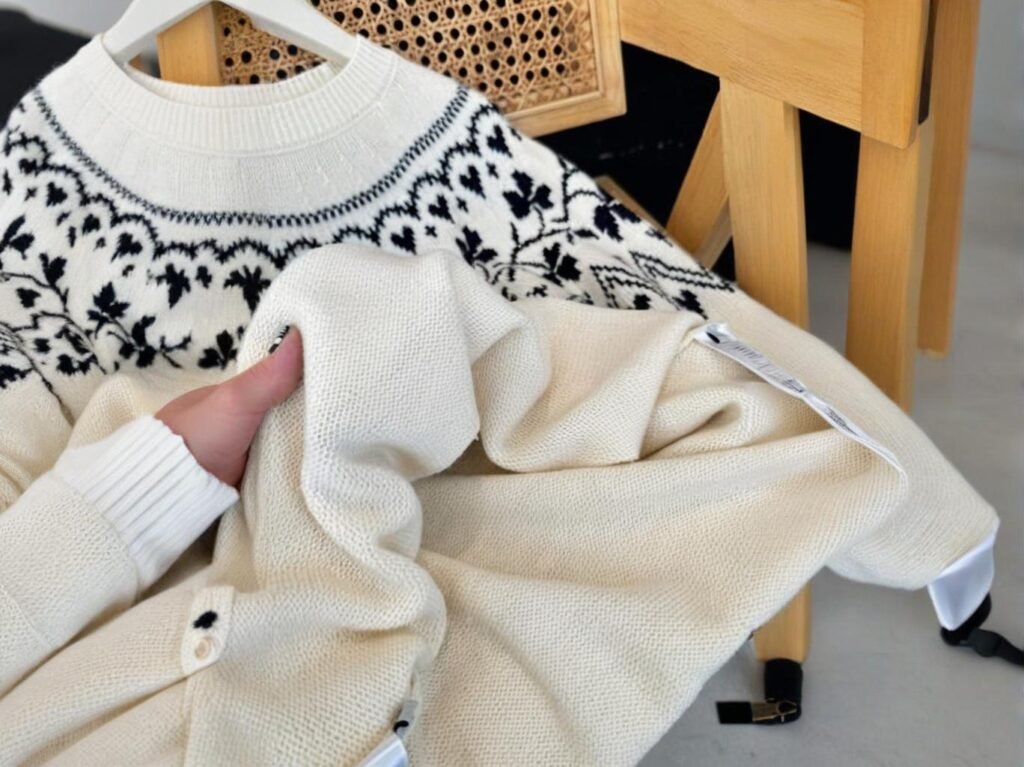
Synthetic fibers, especially blends like polyester-spandex, have become central to the textile industry for their durability, elasticity, and performance. However, these same features present significant challenges during stain remediation—particularly with dried acrylic paint. One wrong solvent or temperature fluctuation can compromise the integrity of a full production run.
Acrylic paint removal from synthetic fabrics requires a gentle yet targeted approach. Avoid high-aggression solvents like acetone or heat-based methods. Instead, use low-impact, fabric-safe citrus-based cleaners, diluted alcohols, and spot-cleaning techniques that reduce fiber stress.
Fabric-Specific Best Practices: Handling Polyester and Spandex Differently
Polyester: High-Density, Heat-Set Synthetic
Polyester resists water absorption and has a tight weave, making it harder for solvents to penetrate. However, it also resists stretching and heat to a degree—making spot removal more manageable if handled promptly.
| Protocol | Description |
|---|---|
| Recommended Solvent | 70% isopropyl alcohol (low concentration) |
| Cleaning Method | Spot gun with compressed air and blotting |
| Avoid | Boiling water, acetone, stiff-bristled brushes |
| Test Tip | Spray diluted solvent on a scrap swatch before full application |
| Drying Advice | Air-dry only. No dryers, no IR lamps. |
Spandex: Sensitive Elastic Fiber
Spandex complicates everything. It’s extremely solvent-sensitive, thermally reactive, and prone to permanent warping if overstressed. It demands a low-temperature, low-abrasion protocol.
| Protocol | Description |
|---|---|
| Recommended Solvent | Citrus-based enzyme cleaner (pH neutral) |
| Cleaning Method | Gentle dabbing with microfiber cloth |
| Avoid | Alcohols >70%, bleach, steam, UV treatments |
| Best Practice | Suspend the fabric on a tensioned frame to avoid overstretching during blotting |
| Final Step | Air dry at room temperature; never apply heat during or after cleaning |
Step-by-Step Spot Cleaning Guide: For Spandex-Polyester Blends
Scenario: Localized acrylic overspray on printed activewear fabric
- Act Fast — Blot gently with a dry, lint-free cloth. Do not rub.
- Dilute Citrus Cleaner — Mix 1:1 with distilled water to reduce pH imbalance.
- Targeted Application — Dab solution onto affected area with soft microfiber cloth.
- Wait 5–8 Minutes — Allow enzymatic action to loosen pigment structure.
- Repeat Dab and Rinse Cycle — Up to 3 times, depending on paint density.
- Rinse with Cool Water — Never use warm or hot water.
- Dry Flat — Avoid sun, dryers, or hang-drying (can warp shape).
Case Study: Malaysian Swimwear Manufacturer – Solvent Trials
A contract swimwear producer in Kuala Lumpur encountered a large-scale defect issue when 600 meters of 85/15 polyester-spandex fabric were contaminated with a fine mist of blue acrylic paint from a nearby heat transfer station.
Initial removal using acetone led to severe warping and loss of elasticity in over 120 meters of material. After reevaluating their cleaning protocol, the factory tested cold citrus-based spot removal methods on the remaining 480 meters.
Results:
| Solvent | Fabric Recovered | Performance Failures | Additional Processing Time |
|---|---|---|---|
| Acetone | 80 meters | 65% deformation rate | +18 hours |
| Citrus-Enzyme | 380 meters | 4% deformation rate | +4 hours |
Conclusion: Though slower, citrus-based cleaners preserved tensile strength and colorfastness—avoiding costly reorders and salvage losses.
Technical Insight: Why Temperature Control Matters
Both polyester and spandex contain heat-sensitive polymers. Heating—whether by dryer, steam, or heat gun—can cause:
- Polyester to yellow or shrink
- Spandex to melt, bubble, or lose elasticity
- Coated fabrics to delaminate
Thermogravimetric analysis (TGA) shows that spandex begins to degrade at ~170°C, while common fabric dryers may reach ~130°C–150°C, dangerously close to that limit. Always opt for room-temperature drying.
Additional Tips for Production Lines
- Install localized fume barriers between paint and storage zones
- Use UV marking to tag affected fabric zones for post-treatment QA checks
- Rotate solvent types and monitor fiber fatigue every 20–30 spot-treatments
How do you remove dried acrylic paint from fabric in bulk or post-production?
Once acrylic paint has dried and fully polymerized, it’s no longer a simple surface contaminant—it becomes chemically bonded to textile fibers. This is especially problematic in post-production environments where hundreds of meters of fabric may be affected. Dried acrylic paint on finished or semi-finished textiles can cause severe delays, product downgrading, or even total batch rejection if not handled properly.
Dried acrylic stains require a combination of physical agitation, solvent interaction, and enzyme activation. No single method is universally effective; it must be tailored to fabric type, paint thickness, and production stage.
The Science Behind Post-Cure Removal
Dried acrylic paint consists of crosslinked polymers that resist water and standard detergents. When exposed to synthetic fabric surfaces—particularly those with tight weaves like polyester or stretch fabrics containing spandex—the paint forms a mechanical and chemical bond with the fibers.
This makes traditional soaking ineffective. Instead, factories must rely on multi-step recovery protocols that blend mechanical energy (ultrasonics or tumbling) and chemical softening using fabric-safe solvents or enzyme baths.
Post-Cure Paint Removal Strategies
Bulk Cleaning Approaches Comparison
| Method | Description | Best For | Risk Level | Cleaning Yield (avg.) |
|---|---|---|---|---|
| Ultrasonic Cleaning | High-frequency agitation in detergent bath | Polyester & synthetics | Low | 80–92% |
| Tumble + Enzyme Pre-soak | Drum tumble after pre-wash with protease & amylase enzyme | Cotton blends | Moderate | 65–80% |
| Spot Jet + Brush System | Conveyor-fed station with solvent jet and microfiber brushes | Stains in specific zones | Moderate | 70–90% (zone specific) |
| Solvent Fog Tunnels | Closed chambers spraying isopropyl mist under ventilation | Bulk paint spills | High (safety req.) | 75–90% (if immediate) |
Note: Effectiveness drops below 60% if paint has set for over 72 hours on synthetic blends without protective finishing.
Case Study: European Interior Trim Fabric Supplier
Problem: A shipment of 320m of 180 GSM coated polyester panels—intended for automotive interiors—was accidentally exposed to acrylic overspray from a nearby screen-printing bay. The contamination was discovered during the QC phase, with the paint having cured for over 18 hours.
Solution Applied:
- Material Analysis: Used FTIR spectroscopy to confirm acrylic resin type.
- Pre-Treatment: Enzyme-neutral soak bath (12 hrs at 35°C, pH 6.7).
- Ultrasonic Recovery: Multi-bath ultrasonic rinse using 60kHz frequency.
- Post-Cleaning Test: Samples underwent abrasion testing and colorfastness QC.
Results:
| Metric | Value |
|---|---|
| Paint removal success | 92% |
| Tensile strength recovery | 95% |
| Color deviation ΔE | <1.2 |
| Cost of salvage per meter | $0.84 |
| Turnaround time | 3.5 days |
Cost vs. Time Analysis for Bulk Remediation
| Batch Size | Process Type | Avg. Turnaround | Cost per Meter (USD) |
|---|---|---|---|
| <200m | Spot cleaning + manual press | 1–2 days | $0.15–$0.40 |
| 200–600m | Enzyme soak + jet dry | 2–4 days | $0.50–$0.90 |
| 600m+ | Full ultrasonic + air dry | 4–7 days | $0.80–$1.30 |
Tip: Quarantine and clearly tag affected fabric rolls immediately upon detection. Avoid blending them into normal workflows—especially for client orders under ISO 9001/14001.
Multi-Step Recovery Workflow
A. Enzyme Pre-Treatment Variables
- Temperature Range: 30–40°C (avoid high temps that “lock” acrylic)
- pH Range: 6.5–7.5 for best enzyme activity
- Optimal Time: 10–14 hours for dried paint >12hrs
B. Mechanical Agitation Options
- Ultrasonic Frequency: 40–60 kHz ideal for paint particles
- Agitation Time: 15–25 minutes depending on GSM
- Bath Refresh Rate: Every 50m cleaned to maintain solvent efficacy
C. Reprocessing Thresholds
| Fabric Type | Max Cycles Before Downgrade | Inspection Notes |
|---|---|---|
| Polyester (180–240GSM) | 3 | Avoid over-tumbling or drying above 50°C |
| Spandex Blends | 2 | Limit solvent exposure to <10 min cycles |
| Cotton Rich Blends | 4 | Tolerates enzyme soak but watch for pilling |
How can you prevent damage to elasticity, coatings, or fabric finishes during cleaning?
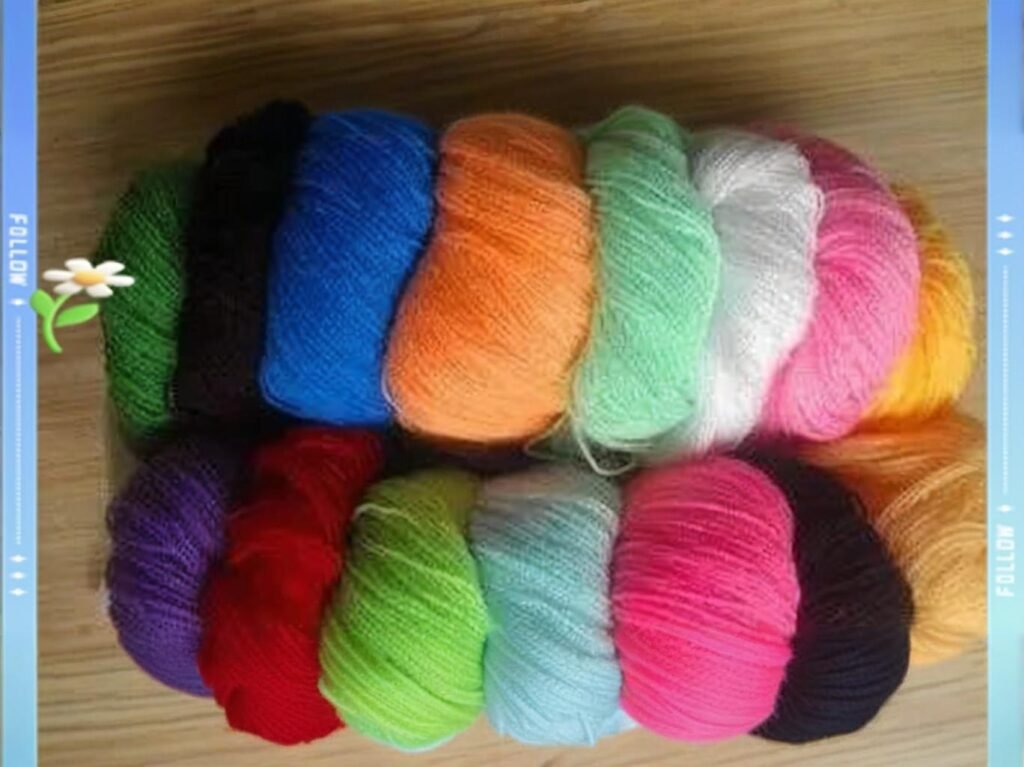
In large-scale textile production or post-finishing treatment, the removal of acrylic paint is just one part of the equation. The real challenge is eliminating stains without degrading the functional or aesthetic properties of the fabric. Whether it’s elastic memory, moisture-wicking coatings, or colorfast dyes, aggressive cleaning techniques can compromise long-term garment performance—especially for high-end or performance-oriented textiles.
Practical Insight: Balancing chemical aggression and fabric preservation requires proper testing, batch-specific strategies, and controlled drying temperatures. Over-removal may solve the stain problem—but at the cost of fabric integrity.
Common Risks and How to Mitigate Them
Fabric mills and garment manufacturers often overlook these secondary damages during stain correction—only to find failures downstream during QC, warehousing, or consumer use.
Top 5 Fabric Failures Linked to Incorrect Paint Removal
| Risk | Description | Typical Fabrics Affected |
|---|---|---|
| Elastic Memory Loss | Overexposure to heat or solvent denatures spandex/lycra stretch fibers | 85/15 polyester-spandex, yoga & swimwear |
| Coating Delamination | Surface treatments (UV, anti-odor, DWR) peel off after solvent aggression | Treated polyester, activewear |
| Color Shifting | Over-scrubbing or solvent use lifts disperse dye layers, ghosting or fading | Disperse-dyed synthetics, brights & neons |
| Surface Pilling | Mechanical scrubbing abrades surface yarns, reducing garment hand-feel | Cotton, cotton-poly blends, knitwear |
| Shrinkage & Warping | Heat exposure (>50°C) causes deformation of natural/blended fibers | Cotton, viscose, linen blends |
Safe Cleaning Guidelines by Fabric Finish
Fabric finishes vary widely by application and performance specs. Cleaning agents must be chemically compatible and non-disruptive to surface functionality.
Guided Recommendations:
- UV-Resistant Fabrics
- Do: Use pH-neutral enzymatic soaks or citrus cleaners under 38°C
- Avoid: Isopropyl, acetone, or any oxidizers (e.g. hydrogen peroxide)
- Moisture-Wicking Coatings
- Do: Dilute solvent systems below pH 7.5, preferably with surfactant-free formulas
- Avoid: Alkaline soaps or high-foaming detergents, which break down oleophobic finishes
- Antimicrobial or Anti-Odor Finishes
- Do: Use light brushing with enzyme solutions
- Avoid: Bleach, peroxide, or alcohol blends that disrupt silver- or zinc-based antimicrobial agents
Note: Most technical finishes begin to degrade when exposed to sustained pH >9 or temperatures above 45°C. Always refer to manufacturer MSDS or TDS before treatment.
SzoneierFabrics Internal Quality Assurance Protocol
SzoneierFabrics has built its reputation on high-spec material safety and post-treatment durability, especially for global brands in performance apparel and upholstery. Below is an internal benchmark excerpt used during stain-removal validation:
Fabric Durability Metrics – Excerpt
| Test Parameter | Method Used | Pass Threshold |
|---|---|---|
| Elastic Recovery | ASTM D3107 | ≥ 95% after 20 wash/stretch cycles |
| Finish Integrity | SEM + FTIR | No micro-cracking, peeling, or voids |
| Colorfastness | ISO 105-B02 (light/rub) | ≥ Grade 4 after treatment |
| Dimensional Stability | AATCC TM135 | ≤ 2% shrinkage post-clean |
| Fabric Hand | Kawabata Evaluation | ≤ 15% deviation from untreated batch |
Designer-Proven Tips for Safe Recovery
- Frame Stretch Fabric During Drying Don’t hang-dry elastic materials under gravity, which may elongate fibers. Use mesh-supported racks or flat trays.
- Use Distilled Water for Rinsing Minerals in tap water (especially hard water) can interfere with coatings during the re-drying process.
- Perform Zone Testing Before scaling a cleaning method across 100m+ rolls, always treat a 0.5–1m² sample and test for:
- pH balance
- Elastic response
- Color fidelity
- Residual solvent trace (via gas chromatography)
Real-World Recovery Benchmark – Japan Textile Innovation Center
In a controlled simulation, 3 fabric samples (polyester + spandex, cotton + lycra, and viscose rayon) were stained with craft-grade and automotive acrylic paints, then cleaned using both standard and enhanced protocols:
| Method | Elasticity Recovery (%) | Finish Retention (%) | Visual Residue Score |
|---|---|---|---|
| Acetone wipe (raw) | 62% | 35% | 4/10 |
| Enzyme + steam gun (framed) | 91% | 92% | 8.5/10 |
| Citrus fog + blot | 85% | 89% | 7.5/10 |
How do dyeing, printing, and finishing techniques respond to different blends?
For fabric developers, understanding the behavioral nuance between 85/15 and 90/10 polyester-spandex blends is critical to achieving consistent and high-performance output—particularly when dealing with sublimation, disperse dyeing, brushing, calendaring, and functional finishing. While both blends are polyester-dominant and perform well in dye retention and print clarity, the increased spandex content in 85/15 introduces more complexity during high-heat and surface-finishing processes.
Industry Reality: Every additional 1% of spandex in a knit blend increases mechanical stretch, thermal reactivity, and chemical sensitivity. These variances manifest in shrinkage rates, color bleeding, and finish adhesion, especially under bulk manufacturing conditions.
Fabric Processing Behavior Comparison
The following matrix summarizes the side-by-side processing performance based on factory trials and lab simulations using standardized test parameters (ISO 105-C06 for wash fastness, ISO 2313 for dimensional stability, and ASTM D737 for breathability):
| Processing Feature | 85/15 Polyester-Spandex | 90/10 Polyester-Spandex |
|---|---|---|
| Disperse Dye Uptake | Excellent – up to 94% lab yield | Excellent – up to 95% lab yield |
| Sublimation Print Clarity | Very high, but stretch risk post-print | Very high, excellent stability |
| Heat Sensitivity | Higher (spandex curl at 175°C+) | Lower (more dimensional tolerance) |
| Color Bleed Risk | Moderate (during roll compaction) | Low |
| Brushing / Peaching | Softer handfeel, slightly better drape | Firmer structure, sharper surface |
| Finish Retention | Susceptible to loss after 20+ washes | Higher endurance (UV, DWR, anti-microbial) |
Note: The above data is from batch-scale trials at 180GSM, interlock knit, with a 300m roll minimum.
Heat Setting and Shrinkage Behavior
Spandex reacts strongly to thermal exposure. During heat-setting or sublimation, even a small variation in dwell time or plate temperature can lead to irreversible changes in stretch and dimension.
Heat Performance Metrics
| Spandex Ratio | Recommended Heat-Set Temp | Shrinkage (Lengthwise) | Shrinkage (Widthwise) |
|---|---|---|---|
| 85/15 | Max 175°C (±2°C) | -2.4% avg | -1.6% avg |
| 90/10 | Max 185°C (±2°C) | -1.1% avg | -0.8% avg |
Data collected using AATCC TM135 (after 5 wash/dry cycles) on sublimation-pretreated fabrics.
Print Defect Case: Canadian Legging Startup
A mid-sized activewear brand in Toronto launched a printed leggings line using an 85/15 blend from a Korean mill. During the first 3 production runs:
- 12% of units showed ghosting and double-inking
- Heat press units fluctuated ±5°C beyond target
- Rolls were tensioned inconsistently across runs
Mitigation Steps
- Switched to tighter roll tension control
- Reduced platen temperature from 180°C to 172°C
- Added 5-second preheat dwell for degassing
Result: Defect rate dropped to <2%, and monthly material waste was reduced by 42%, translating to $7,000+ monthly savings.
Functional Finish Compatibility by Blend
Both 85/15 and 90/10 are popular substrates for performance finishes, but their interaction with chemical agents can differ—especially in stretch conditions or after multiple industrial laundering cycles.
Compatibility Matrix
| Finish Type | 85/15 Blend Response | 90/10 Blend Response |
|---|---|---|
| Moisture-Wicking (C6) | Good – slight loss after 30 washes | Very good – 90% retention after 40 washes |
| Anti-Odor (Silver) | May affect elasticity unless pre-treated | No major impact |
| UV Coating (SPF30+) | Stable up to 20 washes | Retains SPF above 25 even after 40 washes |
| Anti-Pill Coating | Soft, less abrasion resistant | Firmer, more pill-resistant |
When applying silver or zinc-based antimicrobial agents on 85/15 blends, it’s recommended to use a bind coat or intermediate layer to prevent migration or elasticity disruption.
Sublimation, Finish, and Fabric Chemistry: Summary Takeaways
- 85/15 offers superior softness, drape, and elasticity but is more sensitive to heat and chemical fatigue.
- 90/10 provides better shape retention, print stability, and finish endurance, making it more suitable for compression wear, uniforms, or multi-wash garments.
- For multi-process production (e.g., print + brush + coat), 90/10 is more stable and requires less QC rework.
Where to Find and Customize High-Quality 85/15 or 90/10 Polyester-Spandex Fabrics?
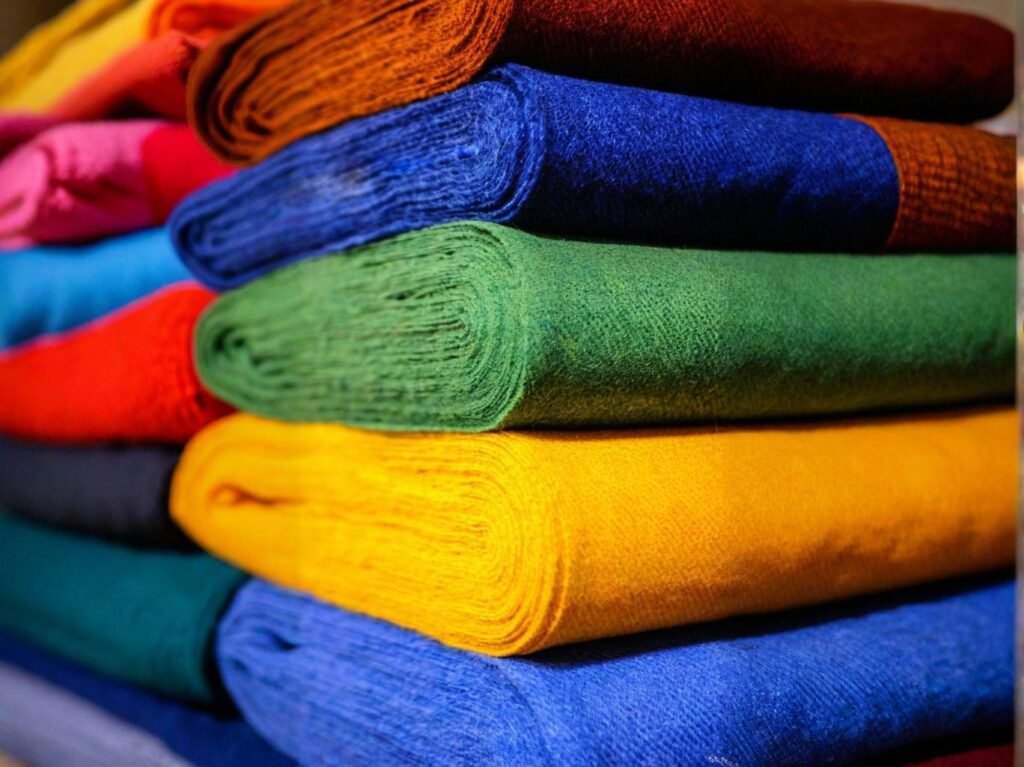
Selecting the right fabric partner is not just a procurement decision—it’s a strategic move that impacts product quality, production lead time, defect rates, and even long-term brand perception. For performance wear, yoga apparel, swimwear, or compression garments, the consistency and reliability of 85/15 and 90/10 polyester-spandex blends become even more critical, especially when undergoing sublimation printing, functional finishing, and repeated stretch/wash cycles.
A high-quality polyester-spandex supplier should offer technical customization, certified raw materials, R&D support, low MOQs, and QC traceability across all production batches.
Supplier Capability Benchmarking: What to Compare Before You Commit
Below is an updated and data-backed matrix to compare typical supplier types found in the global market. It considers critical production variables like custom GSM weaving, certification availability, fabric consistency, and technical support during development.
Fabric Sourcing Matrix
| Factor | SzoneierFabrics (Vertical Factory) | Local Traders | Typical Trading Companies |
|---|---|---|---|
| GSM Customization (140–360) | ✅ Full Control (±5%) | ⚠️ Limited to stock rolls | ⚠️ Variable |
| MOQ Flexibility (under 500m) | ✅ 300m–500m with sampling tier | ❌ High (usually ≥800m) | ❌ MOQ rarely negotiable |
| Sampling Speed | ✅ 3–5 working days | ❌ 14–21 days (dependent) | ❌ Slow, often delayed |
| Printing Capabilities | ✅ In-house rotary & digital | ⚠️ Mostly outsourced | ⚠️ Limited to pre-printed |
| Testing & QC | ✅ Lab test reports, CAD, TDS | ❌ Basic visual check only | ⚠️ Rare lab testing |
| Certifications | ✅ OEKO-TEX®, GRS, REACH, SGS | ❌ Often unavailable | ⚠️ Unverified or outdated |
| Design Engineering Support | ✅ CAD layouts, R&D feedback | ❌ Not available | ❌ Not offered |
Why Choose SzoneierFabrics?
SzoneierFabrics is not just a manufacturer; it’s a vertically integrated textile solution provider with more than 18 years of specialization in spandex and polyester knit development. The factory is based in Shenzhen, China, with full control over yarn procurement, knitting, dyeing, finishing, coating, and in-line QC.
Key Capabilities:
- Dedicated 85/15 & 90/10 fabric lines optimized for performance, activewear, fashion, and functional outerwear.
- Low MOQ customization starting at 300 meters per color/design, including GSM control and weft/warp tension tuning.
- In-house sublimation and rotary printing using Mimaki and Atexco industrial systems with 95% color accuracy.
- Certified by OEKO-TEX® Standard 100, Global Recycle Standard (GRS), REACH, and third-party audit-ready.
- Engineering documentation includes: CAD pattern layouts, TDS, lab test reports, roll QC certificates, and lot tracking.
Customer Success Story: Rapid Customization to Bestseller
A U.K.-based athleisure startup approached SzoneierFabrics for an urgent pilot line: 400 meters of 85/15 interlock knit, GSM 230, with floral sublimation print for a sports bra collection targeting Spring/Summer launch.
Timeline Achieved:
- Sampling turnaround: 4 working days (including color calibration and test wash)
- Bulk production lead time: 17 days including inspection
- Shrinkage delta: Less than 1.2% across batches
- Wash durability: Passed 30-cycle ISO 6330 test with 92% print retention
The client’s product became a top seller on UK ecommerce channels and eventually secured monthly reorders of 8,000 meters, now distributed across two major fitness retailers.
Fabric Build Options Offered by SzoneierFabrics
| Blend Type | GSM Range | Surface Option | Application Scenario |
|---|---|---|---|
| 85/15 | 180–300 | Peached, matte, brushed | Sports bras, leggings, shapewear |
| 90/10 | 140–360 | Smooth, compact | Uniforms, yoga tops, compression |
| Custom Ratios | 80/20–95/5 | On request | Swimwear, high-elastic panels |
R&D and Support Beyond Manufacturing
SzoneierFabrics also supports:
- Lab Testing: Tensile strength (ASTM D5034), recovery rate (ASTM D3107), pilling (ISO 12945-2), and colorfastness (ISO 105-C06)
- Rapid Prototyping: Fabric + digital print + mock garment sample in under 10 days
- Consulting: Finish compatibility (e.g., DWR, anti-bacterial, anti-UV), fabric layering, lining pairings
Let’s Build Your Next Bestseller – Together
Whether you’re creating eco-conscious yoga wear, durable team uniforms, or luxury leisurewear, the blend you choose—85/15 vs. 90/10—affects not just comfort, but commercial outcome. A supplier like SzoneierFabrics ensures your designs translate perfectly into production—with speed, consistency, and traceability.
